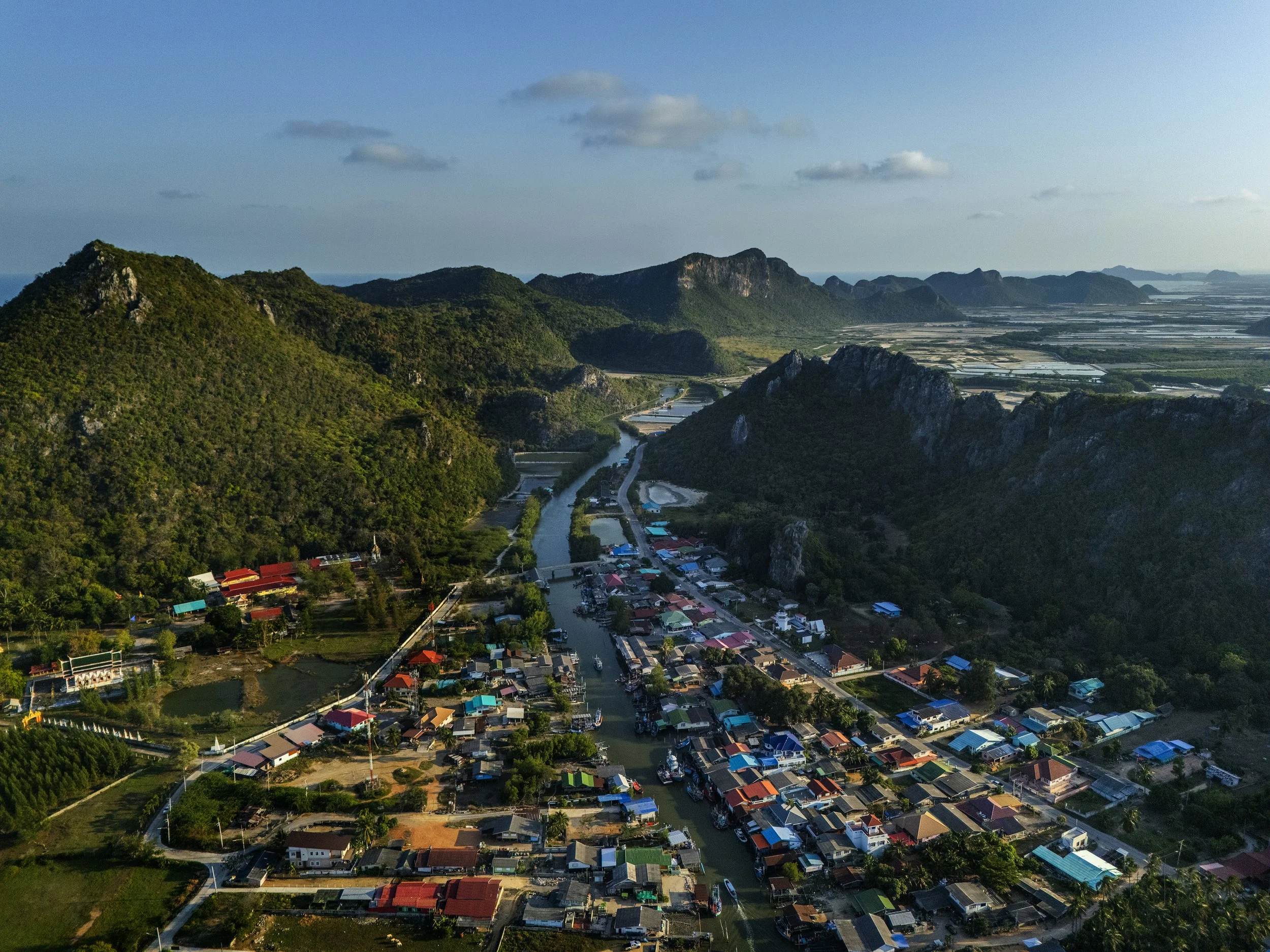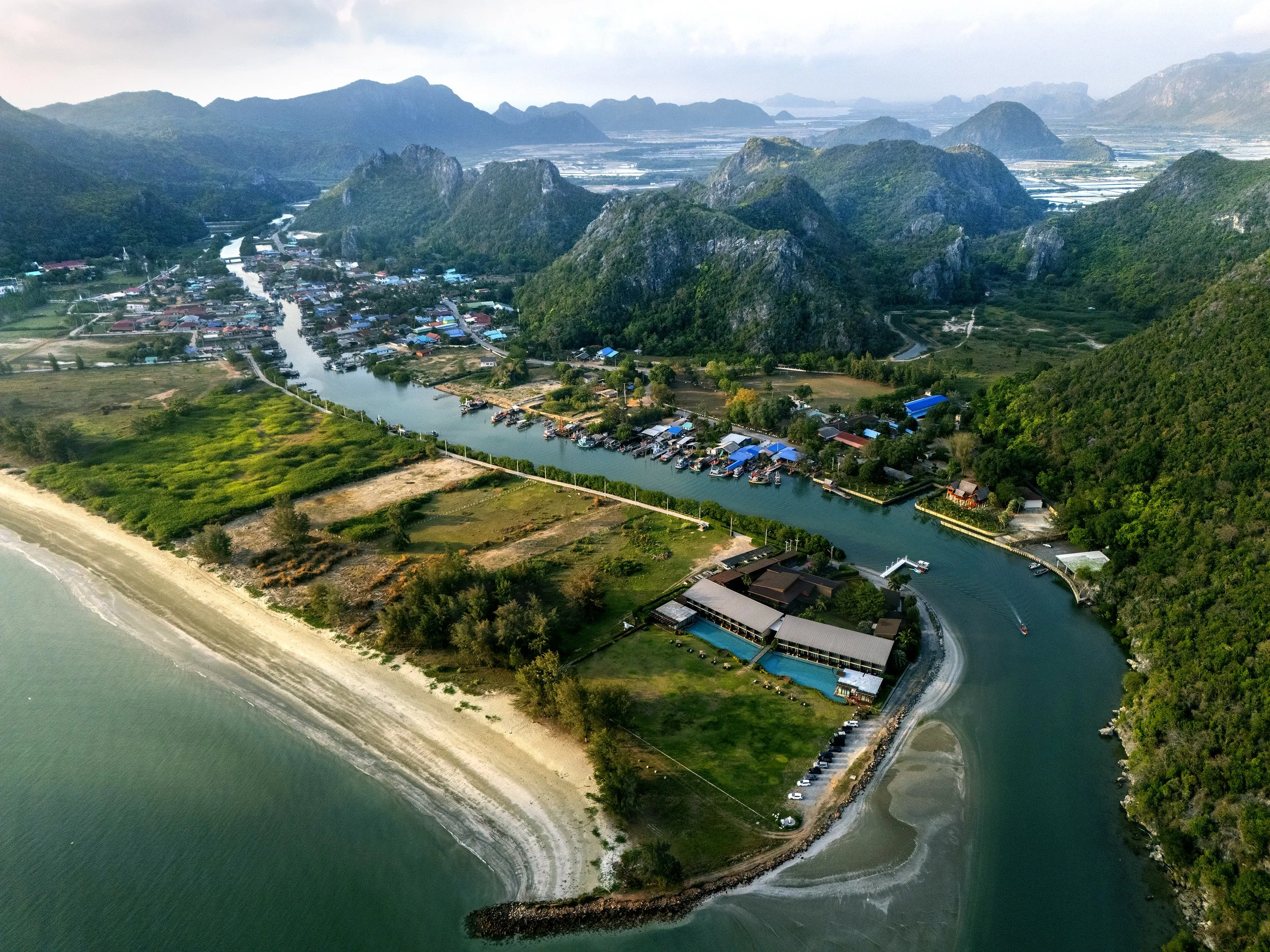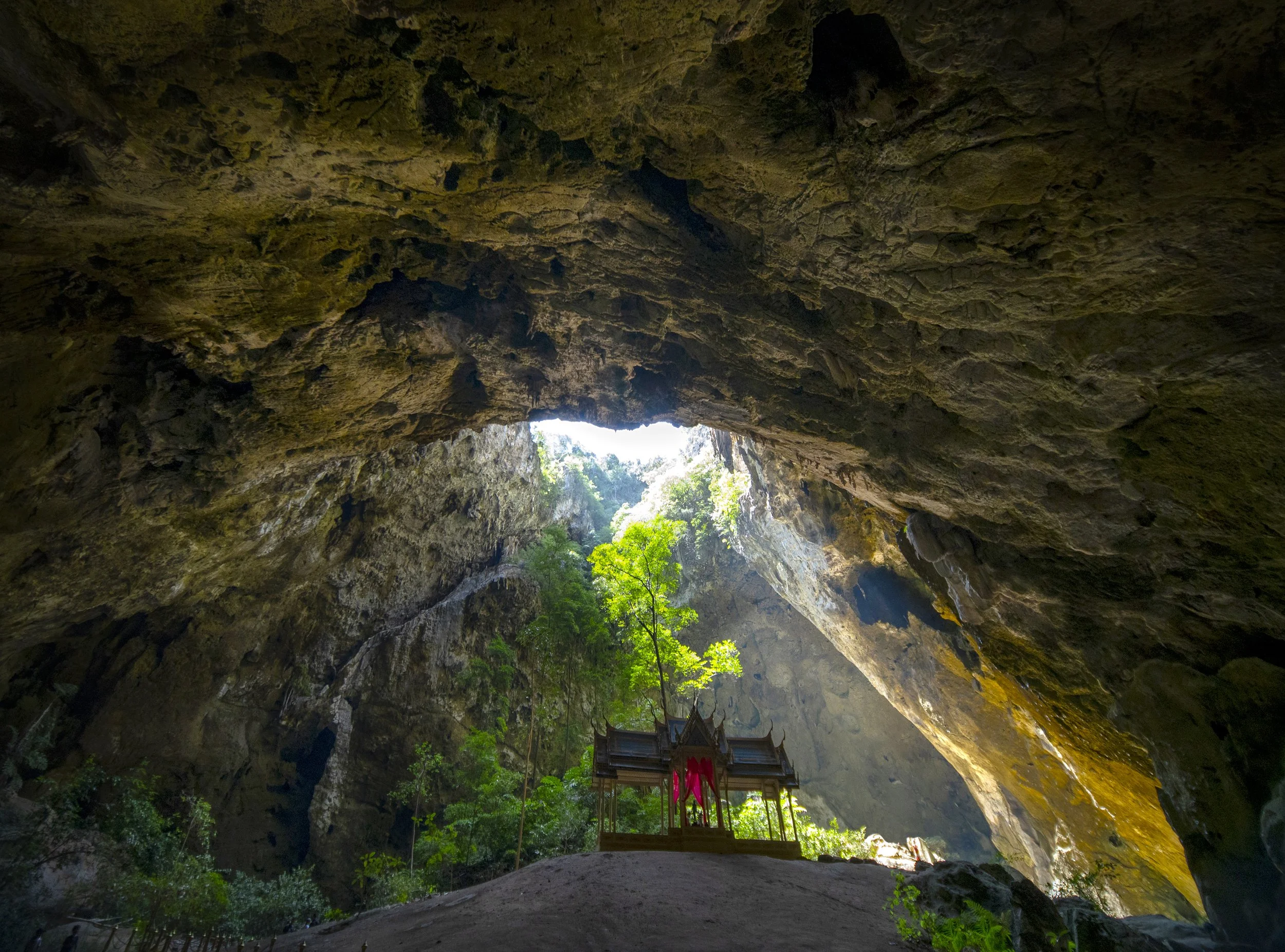The Landscape of Sam Roi Yot
Nestled along the pristine coastline of the Gulf of Thailand in Prachuap Khiri Khan province, the region of Sam Roi Yot presents a landscape of such dramatic beauty it seems almost mythical. Its name, which translate to “Three Hundred Peaks,” is a poetic and precise description of its most defining feature: a legion of limestone karsts that erupt from both land and sea, creating a vista of serene chaos.
Captivating view of the fishing villages
This area is a tapestry of woven with treads of ancient geology, quiet history, and breathtaking natural wonders, making it a unique and captivating corner of Thailand that exists far from the well- trodden tourist paths.
The landscapes of Sam Roi Yot is its primary narrator, telling a story millions of years in the making. The iconic karst topography is the result of the relentless work of water on soluble bedrock over eons. What remains today is a spectacular collection of jagged mountains, cloaked in resilient scrubland and dense jungle, which jut abruptly from the coastal plain and the azure waters of the gulf.
Sandy shorelines and jagged mountains
This complex ecosystem is a mosaic of contrasting environments. There are secluded beaches, like the charming Hat Laem Sala, accessible only by boat or a scenic hike over a mountain pass. Inland the Thung Sam Roi Yot freshwater marsh- one of the largest in Thailand, provides a vital habitat for migratory birds and a serene landscape of lotus blossoms and reeds.
Most magnificent of all is Phraya Nakhon Cave, a colossal cavern open to the sky, where sunlights filters down like celestial spotlights to illuminate the elegant Kuha Karuhas Pavillion, a royal structure built for King Chulalongkorn (Rama V). This fusion of royal heritage and raw natural grandeur within the cave is the quintessential image of Sam Roi Yot, perfectly encapsulating its majestics and spiritual aura.
Phraya Nakhon Cave
While the landscape feels timeless, human history in Sam Roi Yot is quieter , woven into the fabric of fishing villages and royal visits. Unlike ancient capitals filled with ruined temples, Sam Roi Yot’s history is more intimate. For centuries, it was primarily a land of small scale fishing communities and farmers who lived in harmony with the challenging yet generous terrain. Its most significant historical chapter began in the late 19th century with the visits of King Chulalongkorn. The King, the great moderniser and traveler, was captivated by the area’s beauty. It was he who commissioned the pavillion in Phraya Nakhon Cave first visiting the site in 1890. His patronage put Sam Roi Yot on the map, transforming it from a local secret into a place of national significance. This royal connection established a precedent for conservation, which culminated in 1966 when the area was declared Thailand’s first coastal national park, protecting its unique ecosystems for posterity.
The history of the area is also etched into the more recent past. During the Vietnam War, the nearby airport at Prachuap Khiri Khan town was a strategic base for the United States Air Force. While Sam Roi Yot itself remained relatively tranquil, the region was thrust into the geopolitics of the era, a stark contrast to its peaceful fishing village identity. Today, the main historical narrative is one of conservation and a gradual, careful embrace of tourism, ensuring that development does not overshadow the natural splendour that defines it.
In conclusion, Sam Roi Yot is a place of profound duality- where the immense scale of geological time confronts the intimate scale of human experience. Its history is not one of empires and conquests, but of loyal admiration and the quiet perseverance of local communities. Its landscape, however, is epic: a breathtaking theatre of limestone peaks, hidden caves, tranquil marshes, and sandy shores. It is a destination that does not simply offer a sight to see, but an atmosphere to be felt-a sense of wonder inspired by the mighty forces of nature and the gentle, enduring spirit of the place. To visit Sam Roi Yot is to understand why a King would build a pavilion in a cave; it is a natural cathedral, a testament to the timeless beauty that defines this unique part of Thailand.
Wat Khao Daeng-Kui Buri District
Last but not least, we are very appreciative to P Wee from Bangkok, whom he suggested this magical destination




